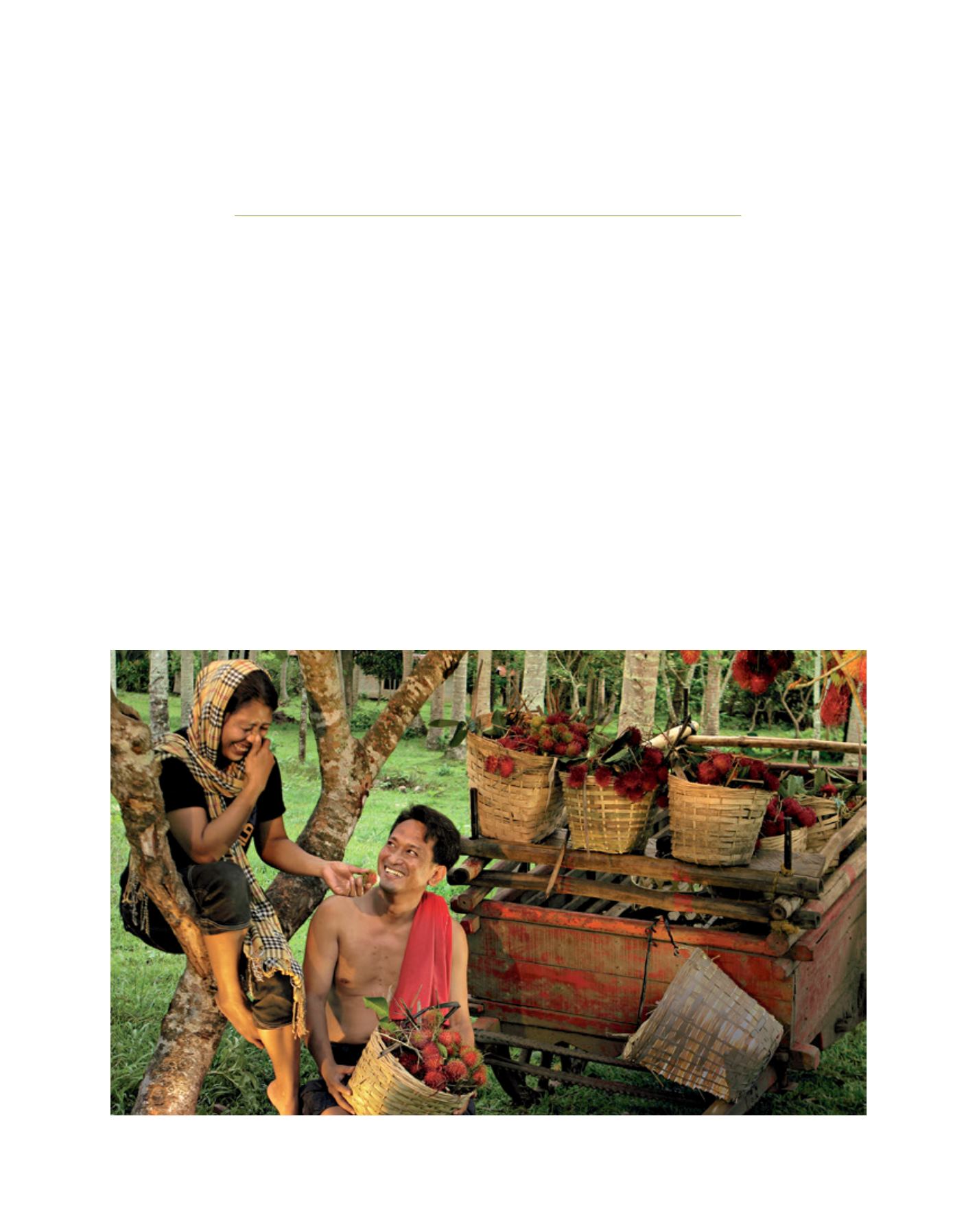

[
] 10
Concepts and realities of family
farming in Asia and the Pacific
Ye Jingzhong, Professor and Deputy Dean at the College of Humanities
and Development Studies of China Agricultural University
R
egional
P
erspectives
A
sia and the Pacific region has the largest number
of family farms in the world. It is home to 60
per cent of the world’s population and to 74 per
cent of the world’s family farmers, with China alone
representing 35 per cent and India 24 per cent of the
estimated 570 million farms worldwide. It is undeni-
able that family farming has played a central role in the
socioeconomic development and well-being of the whole
population in the region.
Recognition of the role of family farming in social, economic
and ecological sustainability has been achieved through the
celebration of the International Year of Family Farming in
2014. As a multilayered social phenomenon, family farming
is too complicated and diversified in different regions and
countries to be clearly delineated. Indeed, it is impossible
to define family farming in Asia and the Pacific without
taking into account the historical and current cultural
repertoires in which it is rooted. When the complexity of
family farming and its differentiated situation under chang-
ing externalities in the region are unfolded, the strengths,
merits and challenges of family farming become clear.
Throughout the history of Asia and the Pacific, family
farming stands as a means of production, a cultural norm
and an institutional arrangement. In the Asia and the
Pacific region, which has the largest number of family
farms in the world, irrigation-intensive agriculture and rice
farming required small social groupings such as families
or villages to be the basic unit of production. Small-scale
family farming is well adapted to the high density of popu-
Image: Danilo O. Victoriano Jr.
‘Harvesting the fruit of love’, Philippines (IYFF photo competition overall winner and Asia, Pacific and Oceania regional winner)
















